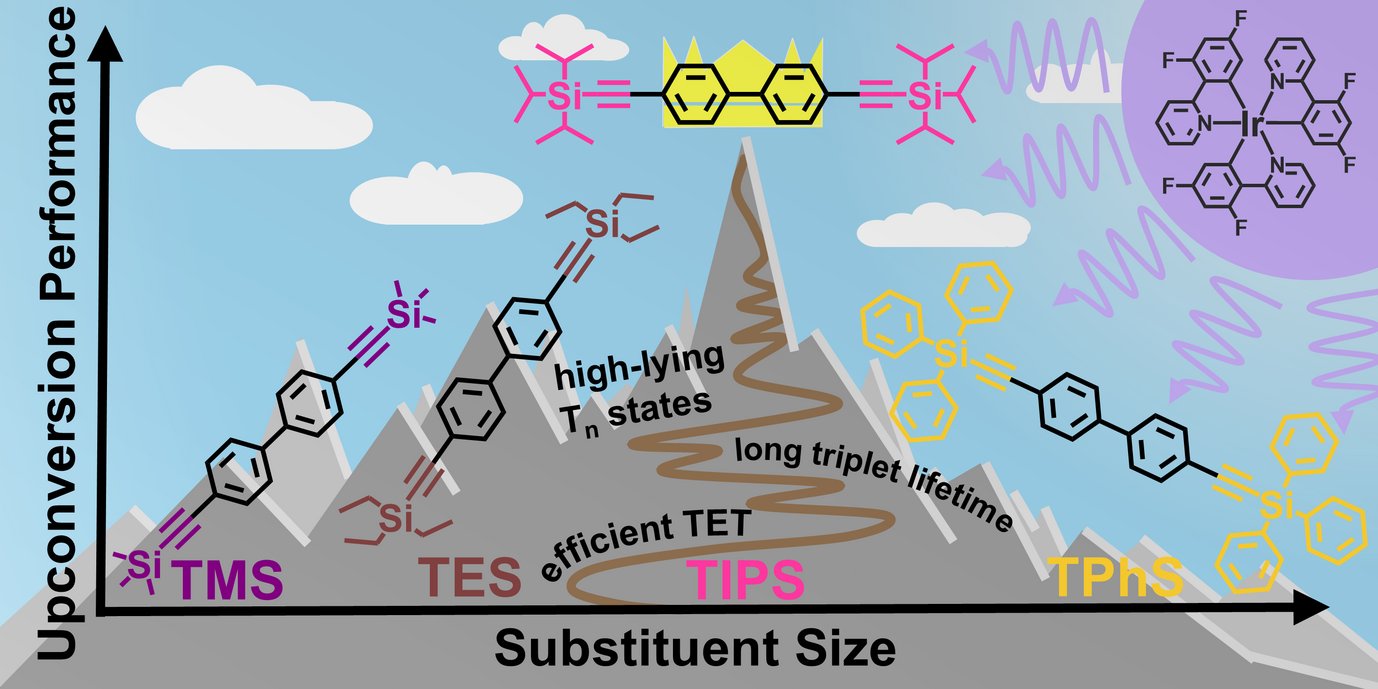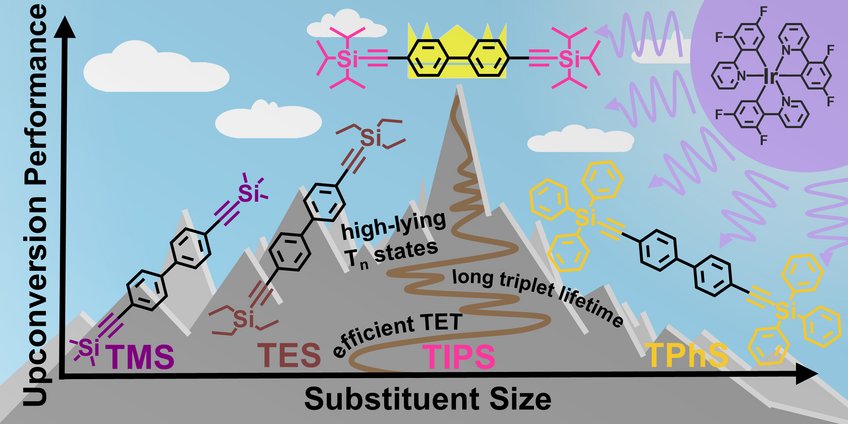At the “Peak” of Vis-to-UV Upconversion: Clear Advantages of TIPS Substituents for a Biphenyl Annihilator

The field of molecular photochemistry is continuously expanding, as sensitized reactions offer precise reaction control and mild reaction conditions. In recent years, sensitized triplet–triplet annihilation upconversion (sTTA-UC) has attracted growing interest due to its versatile applicability and broad molecular tunability. sTTA-UC enables such mild reaction conditions in processes that require high-energy photons, as it merges two low-energy photons into one high-energy photon through a molecular mechanism. Particularly, blue-to-UV upconversion is of great interest, since the resulting photon energies are comparable to those of many chemical bonds, paving the way for many photochemical transformations under mild visible light conditions. However, sTTA-UC systems exhibit a significant drop in upconversion efficiency at shorter emission wavelengths in the UV region, which limits the practical use of blue-to-UV upconversion.
In a collaborative study between JGU Mainz (Kerzig lab) and The University of Tokyo (Yanai lab) a novel annihilator system that shifts the peak emission by 20 nm into the UV region (compared to established efficient UV annihilators) while maintaining high upconversion efficiency was introduced. To achieve this, a series of new annihilators based on a biphenyl core were synthesized and their photophysical properties were evaluated for the upconversion performance. Comparative measurements revealed that the doubly triisopropylsilylacetylene-substituted biphenyl (bTIPS-BP) showed the best performance, even under reduced excitation intensities. Mechanistic studies indicated that bTIPS-BP’s superior upconversion efficiency is primarily due to its elongated triplet lifetime and non-competitive Tn states compared to other derivatives. Its application potential was demonstrated by the uncaging of a fluorescein derivative via a simple emission–absorption process facilitated by bTIPS-BP in an all-organic upconversion system. This represents a promising starting point for the development of even more efficient UV sTTA-UC systems.
